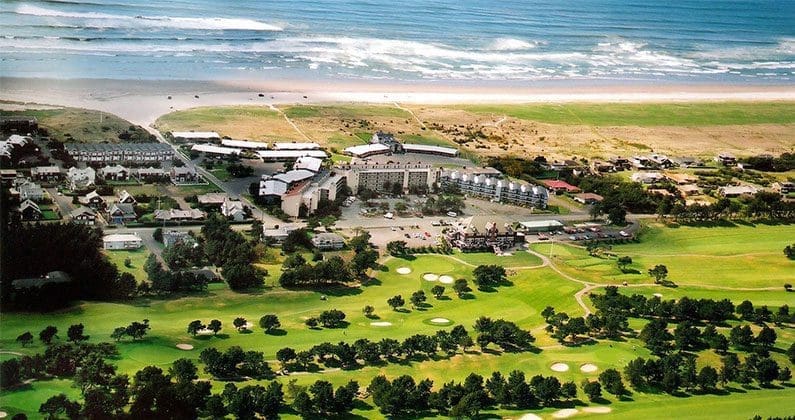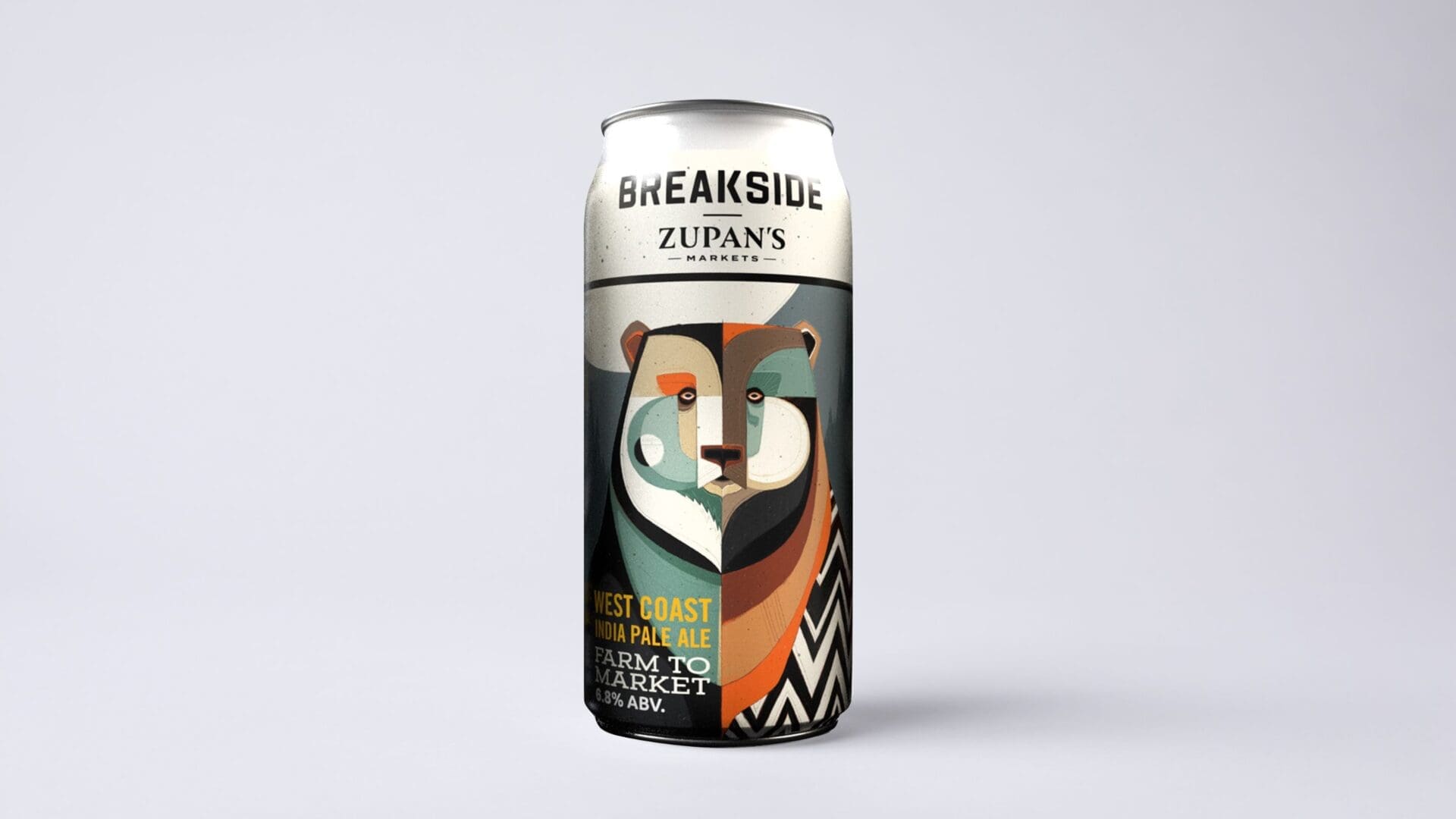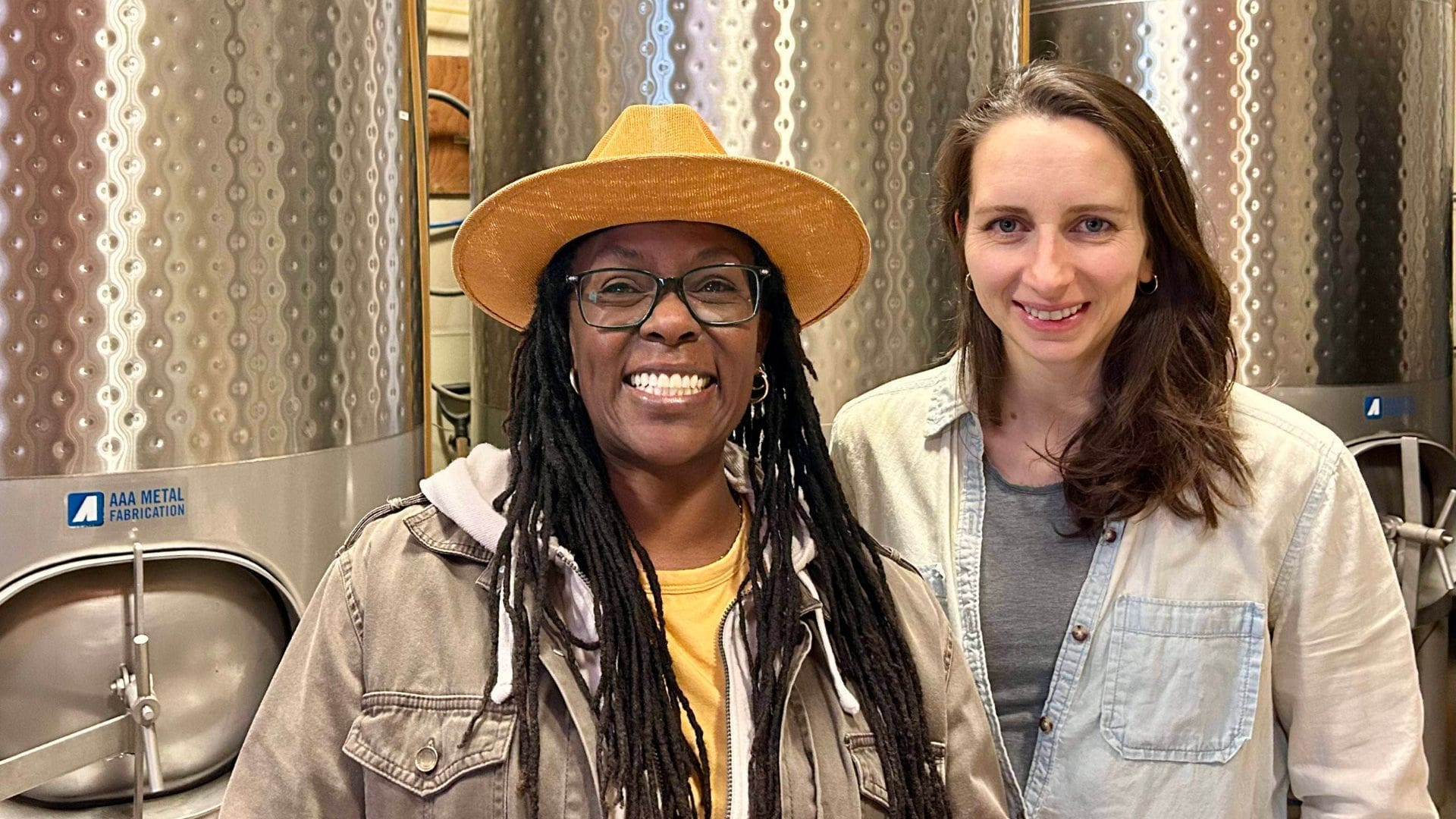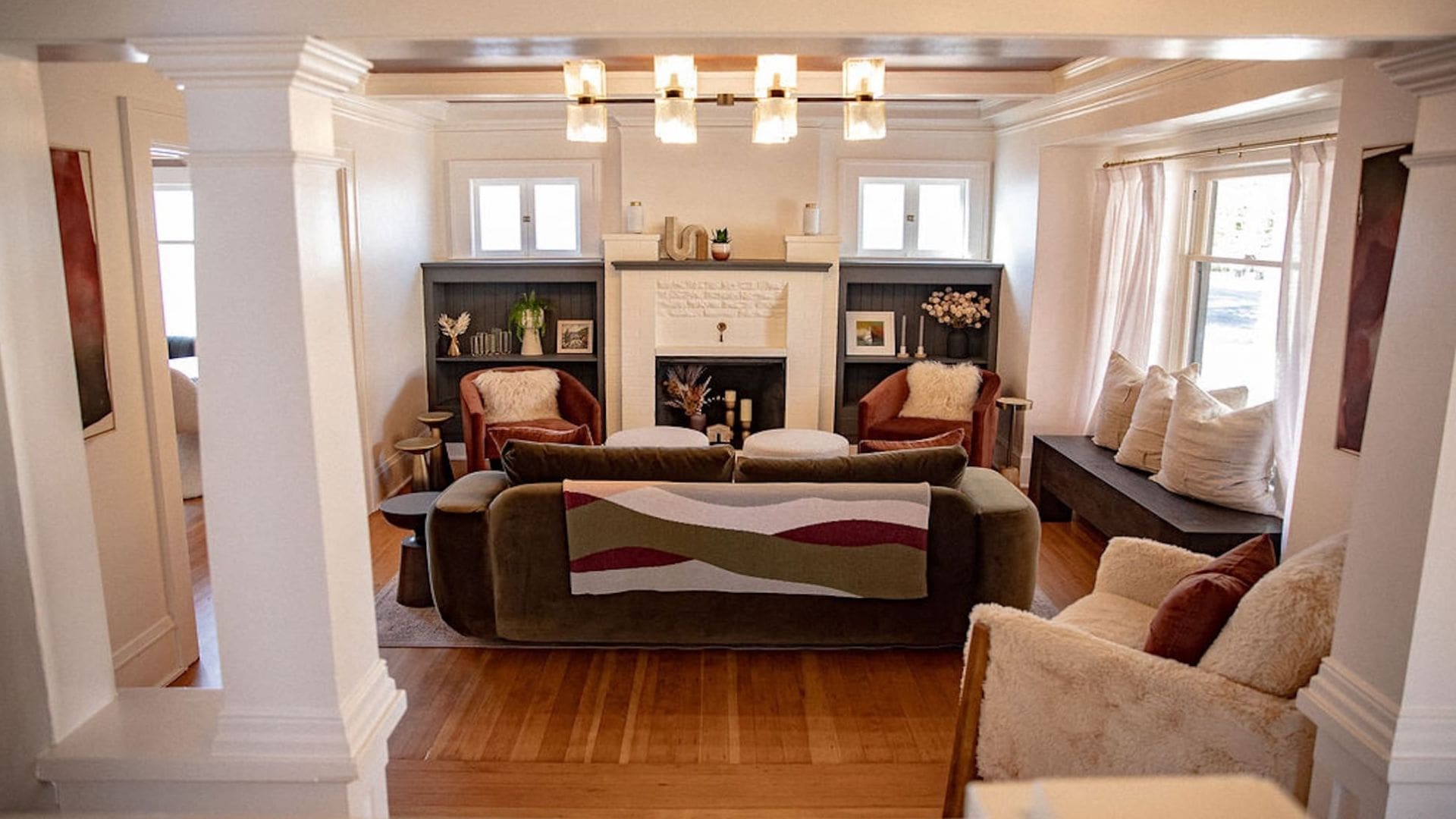At first glance, Gearhart, Oregon, appears to be just another of the small beach towns that liberally dot the Oregon Coast. Rain stipples the windshield as we turn off the Highway 101, leaving behind a generic commercial zone of gas stations and outlet malls.
But once we leave the highway, the transition is abrupt. Instead of tourist haunts like pizza parlors and candy stores, Gearhart’s tranquil main street features a modest city hall, a bakery and a grocery. Our drive takes us through a quiet residential neighborhood lined with tidy homes, built with weathered cedar siding and bright white trim, occasionally strung with buoys. Between the houses, we can spy flashes of gray-blue ocean.
The surf comes into view as we arrive at the McMenamins Gearhart Hotel and Sand Trap Pub, tucked into a courtyard of condominiums and backed by a misty expanse of green grass. We pull up the car, take a whiff of salt air and unload the suitcase with a sigh of relief. It’s 3 p.m., which at McMenamins, means happy hour. Time for a beer.
***
For such a small coastal city, Gearhart has a surprisingly storied history. The city has devoted itself to historical preservation, the peaceful enjoyment of its wide, sandy beaches and the famous Gearhart Golf Links. The course is one of the oldest on the West Coast, and its conditions, climate and superb maintenance very much resemble the iconic St. Andrews Links in Scotland.
Philip Gearhart founded the town in 1848. By the late 1800s, extensions of the railroad line made it easy for Portlanders to travel back and forth between the coast and the city. Mothers and children decamped for the summer, while fathers commuted on what became affectionately known as “the Daddy train.”
The McMenamins painstakingly documented this picturesque heyday on the walls of the renovated Gearhart Hotel. At the turn of the century, the original Gearhart Hotel was an expansive structure that faced a thickly wooded forest. Guests meandered down a narrow wooden walkway to bathe at the beach, rode horses through the woods, surfed and played golf on the links.
Unfortunately, the McMenamins were unable to preserve the original building, which burned down in 1913. However, in 2000, they purchased the historic Kelly House—a clubhouse for the Gearhart Golf Links that was built to resemble the original Gearhart Hotel—and renovated and reopened the upper stories as a hotel in 2012.
It’s hard not to wonder what McMenamins, the family-owned brewpub and hotel chain known for its penchant for quirky and meticulous historical renovation, might have been able to do with the original building. But it’s easy to forget after we take a seat downstairs. Light pours in through the windows of the Sand Trap Pub, which overlooks the dips and hollows of the famous course. Servers chat with our daughter as she toddles around the dining room, and my husband and I sip on pints of the rich, smoky Impromptu porter and the ginger perry.
The lingering spiciness of the fresh ginger adds a bit of warmth as we bundle up for a quick walk to the beach just outside the hotel’s door. But just as we leave the asphalt and step onto the dunes, I lift my head and find myself face-to-face with a wild welcoming party—a herd of about 50 elk, standing right outside the front door.
We don’t move. Neither do they. The closest ones are about 20 feet away. They look at us with placid facial expressions that belie their size—5-feet-tall at the shoulder, and thick with muscle. At first, I only see a dozen or so. But as we walk cautiously closer to the beach, more and more sandy-colored bodies appear through the tall grass. They chew roughage, playfully dance around each other and completely ignore us.
“Wow,” says my husband. “These are some burly deer.” Later, we discover that this is Gearhart’s resident herd. When food is plentiful on the coast, they wander through the neighborhoods, stopping at crosswalks, eating landscaping and stirring merriment, wonder or consternation wherever they go.
***
The next morning, we wake up and check the view from our balcony. The rain has barely subsided and, even so, I see at least a dozen golfers already out in force in the rosy morning light, putting on the green, loading bags and driving off to explore the course.
Unfortunately, neither my husband nor I golf. So after a hearty breakfast of eggs, house-made sausage patties, roasted potatoes and coffee in front of the pub’s fireplace, we drive 20 minutes north to Fort Stevens, an immense state park that encompasses a varied number of historic and natural sights.
Fort Stevens was one of three forts—along with Forts Canby and Columbia in Washington State—that were built to guard the mouth of Columbia River for almost 90 years, from the Civil War through the end of World War II.
Visitors can hike around and on the fort’s old bunkers and anti-aircraft artillery installations, and we find ourselves climbing to the top of the embankments. The sun has broken through the clouds and the wind whips our faces as we look across the river’s wide, glittering expanse to Washington. It’s a beautiful view, and from a military perspective, one worth guarding at almost any cost.
Fort Stevens also boasts one of the coast’s most iconic sights. South along the beach, waves wash around the wreck of the Peter Iredale. In 1906, the vessel hit a Pacific squall on its way to Portland. More than a century later, the ship’s bow and ribs remain, a striking landmark on a long walk down the beach.
***
Downstairs at the Gearhart, the Pot Bunker Bar, titled for the golf course hazard of the same name, offers a cozy hideout for golfers to refresh themselves—or for a family calming their nerves after another close encounter with the elk.
Nearly everything at the Gearhart Hotel revolves around those famous links, even the décor. But as befits a McMenamins, it’s done in a typically idiosyncratic fashion. “McMenamins is passionate about art, food, fun… history, beer and the nontraditional, and aims to celebrate all of those things in each of our locations,” says Tim Hill, the resident McMenamins historian.
Here, the room names are inspired by chapters of a classic book called “The Mystery of Golf” by Arnold Haultain, which was published in 1910, and whose wit and philosophical lyricism makes it something of a golfing “Tao Te Ching.” Our room is called “Lucubrations” (or “meditations,” in non-philosophy-speak). I spy a quote in the hallway on the way to our room that helps me enter an appropriate frame of mind. “Three things there are as unfathomable as they are fascinating to the masculine mind: metaphysics, golf and the feminine heart,” states Haultain.
“The Germans, I believe, pretend to have solved some of the riddles of the first. And the French to have unraveled some of the intricacies of the last; will someone tell us wherein lies the extraordinary fascination of golf?” Arresting thoughts, both golf-related and not, to ponder from our balcony as we look at the sun setting over the course.
Dinner at the pub is a cozy affair. Groups cluster around the fireplace, but the large, horseshoe-shaped bar is equally lively. We taste several of the spirits distilled at the Edgefield, like the Herbal Liqueur No. 7, redolent of cinnamon and mint, and the sweet, citrusy Monkey Puzzle, a malt whiskey with blackberry honey.
By the time our dinner arrives—asparagus soup and crab cakes, Cajun tots, a blue cheese burger—I’ve settled on the seasonal. The Sleepy Hallow Nut brown is a warm russet color, a malty and extremely drinkable classic beer that is reputed to have been the ale that Ichabod Crane drank before his fateful encounter with the Headless Horseman. Whatever its connotations, it is the perfect choice to chase away the chilly ocean breezes just outside the pub’s door.
***
As we load up the car on our last morning in Gearhart, I scan the horizon. I half-expect the elk to make one last appearance, perhaps to say goodbye. They’re not around but we take one last look at the waves before we go. As Portlanders have known for more than a century, Gearhart has been a restful, restorative break from the bustle of the city. And like so many of them over the years, we are not eager to leave.















